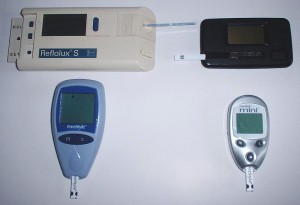Some of the presentations I’ve enjoyed most at TEDMED were those that combined the arts with health and medicine. For example, the amazing medical book collection of Jay Walker (founder of Priceline.com and a zillion other Internet-commerce related businesses). Using themes like “freedom,” “beauty” and “patterns,” he illustrated how medical art and illustration have evolved over the last several hundred years, and in many instances how imagination has helped to fuel it. (Check out his library.)
Perhaps most amazing, Jay didn’t just use PowerPoint to show the images; he brought the actual books, and used an overhead projector to show the images, flipping through the priceless pages right in front of us, as though he were thumbing through this month’s bestseller.
On top of it all, TEDMED founder Richard Saul Wurman, along with Jay and @Radical Media LLC, announced a free iPad app called “Medicá” to share some of these amazing images. Check it out!
Two other talks so far really hit home for me, and both involved the view of the patient.
Tom Goetz, executive editor of Wired Magazine, proposed that medicine is now not so much a problem with science, but a problem of how to convey information. As chief information officer at Children’s Hospital Boston, I tend to agree. Tom focused on how medicine hasn’t engaged the patient sufficiently, and when it does, it’s not in a way that effectively conveys information. He gave a simple yet powerful counter-example: lab reports using color, graphics, and additional content to aid patients’ understanding of this important data. We’ll try to bring some of these ideas home to redesign aspects of our MyChildren’s patient portal, where patients and families can access their own health data.
Wall Street Journal “Personal Technology” columnist Walt Mossberg also talked about things near and dear to me. One of his own personal health issues, diabetes, has demonstrated to him how inadequate the current state of consumer health devices and software is. Walt called all current consumer glucometers “pieces of crap,” saying that if you worked at Apple and brought Steve Jobs one of these, “you’d be fired on the spot.” He pointed out that they’re clunky to use, aren’t easily integrated with smartphone devices, and aren’t natively Web-enabled.
As a pediatric endocrinologist, informaticist and diabetic myself, I tend to agree – in fact, back in the Web 1.0 days over 10 years ago, I worked on a system called Glucoweb that did some of the things that Walt discussed. Walt thought that perhaps the FDA was partially to blame for the current inadequacy (as conversations he’s had with Dean Kamen have concluded), because of its onerous regulations and approval process. He’s longing for the days when consumer health devices were not relegated to “circa 1970s technology” – and I tend to agree!
 Daniel Nigrin, MD, MS, is Chief Information Officer, Senior Vice President of Information Services and a pediatric endocrinologist at Children’s Hospital Boston.
Daniel Nigrin, MD, MS, is Chief Information Officer, Senior Vice President of Information Services and a pediatric endocrinologist at Children’s Hospital Boston.








